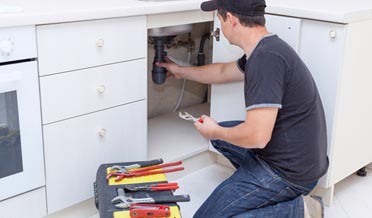Plumbing Repair Services: Main Line Drain Cleaning

Plumbing Repair Services: Main Line Drain Cleaning
8 Drain Line Care Tips for Homeowners
Sewage is a topic we typically avoid or ignore, but this approach can lead to many unpleasant results. As renters or homeowners, it is best to take a measured, careful approach. Here are a few basic facts to remember about your residential sewer system.
- The sewer system includes the totality of all the drains in your home: those leaving sinks, tubs, and appliances.
- The wastewater has many names. Grey water is used water resulting from cleaning. Black water is used water transporting bodily waste. Both use the same system of drains.
- In most locations, the homeowner or landlord is responsible for the system until it reaches the municipal sewer line, generally at the property edge.
- A mixture of fat solids, soap, human waste, toilet paper, food waste, etc., forms a sticky coating on the inside of the drain line. Eventually, this coating can narrow the pipe diameter and completely clog the sewer line.
- Tree and shrub roots are extremely invasive to sewer lines. They will aggressively attack any flaw in the pipe and before you know it the entire pipe can be filled with roots, seeking water and nutrients.
- Early signs of drain line clogging include a slow drain, gurgling sounds, bad smells, backups, and overflows.
What can homeowners do to care for their sewer drain line?
- Limit the amount of food you introduce to your drain. Scrape everything possible into the trash, or better yet, compost it for yard use. Foods to avoid are fibrous foods, such as celery and potato skins, starchy food, such as pasta that swells in water, and FOG—fats, oils, and grease.
- Properly dispose of non-food items that do not belong in a drain. That includes dental floss, cigarette butts, and plastic or cloth items. These items make bulky additions to the sticky coating, hastening a clog.
- Use drain traps whenever possible—in sinks, tubs, and showers. This prevents unnecessary items from entering the sewer system, including human hair.
- Make wise decisions concerning toilet paper. Regular TP dissolves easily by the time it reaches the wastewater treatment plant. Single-ply TP may dissolve before it leaves your sewer system. Flushable wipes do not dissolve in pipes or septic systems and must be removed mechanically. The decision is yours and now you can make an informed decision.
- Make wise decisions concerning flush volumes. Some toilets allow a low-volume flush or a high-volume flush. High-volume flushes are best when flushing solid waste and are generally best for your drain line.
- Flush the entire system regularly. This takes more than one person. Add several gallons of cold water to every sink and tub. Prepare the washing machine to spin dry. Then open every drain, flush every toilet, and turn the washer on all at once. The added water pressure will help to flush away any loose items stuck to the coating.
- Give attention to the direction of the drain after it leaves your home. Some drain lines have an exterior opening and a clean-out valve that is visible in the yard. Determine the route of the drain across the yard. Avoid planting trees or shrubs on or near the drain line. If a tree has already been planted over the drain line, be aware of this factor and be prepared to clear roots from the line.
- Call your plumber as needed. Plumbers acquire specialized (expensive) tools, designed to remove the nasty coating from drains and cut roots from the main line. Preparing to remove a clog beyond the use of a plunger or a 10’ drain snake becomes an expensive DIY task. Call a plumber instead.
Doctor Cool Plumbing Repair Services
Let Doctor Cool help with your Plumbing Repair Services questions. Call Doctor Cool & Professor Heat today at 281-338-8751 or email Doctor Cool and let our professional Residential Plumber Contractors assist with all of your Drain Cleaning questions.
June 22, 2023
